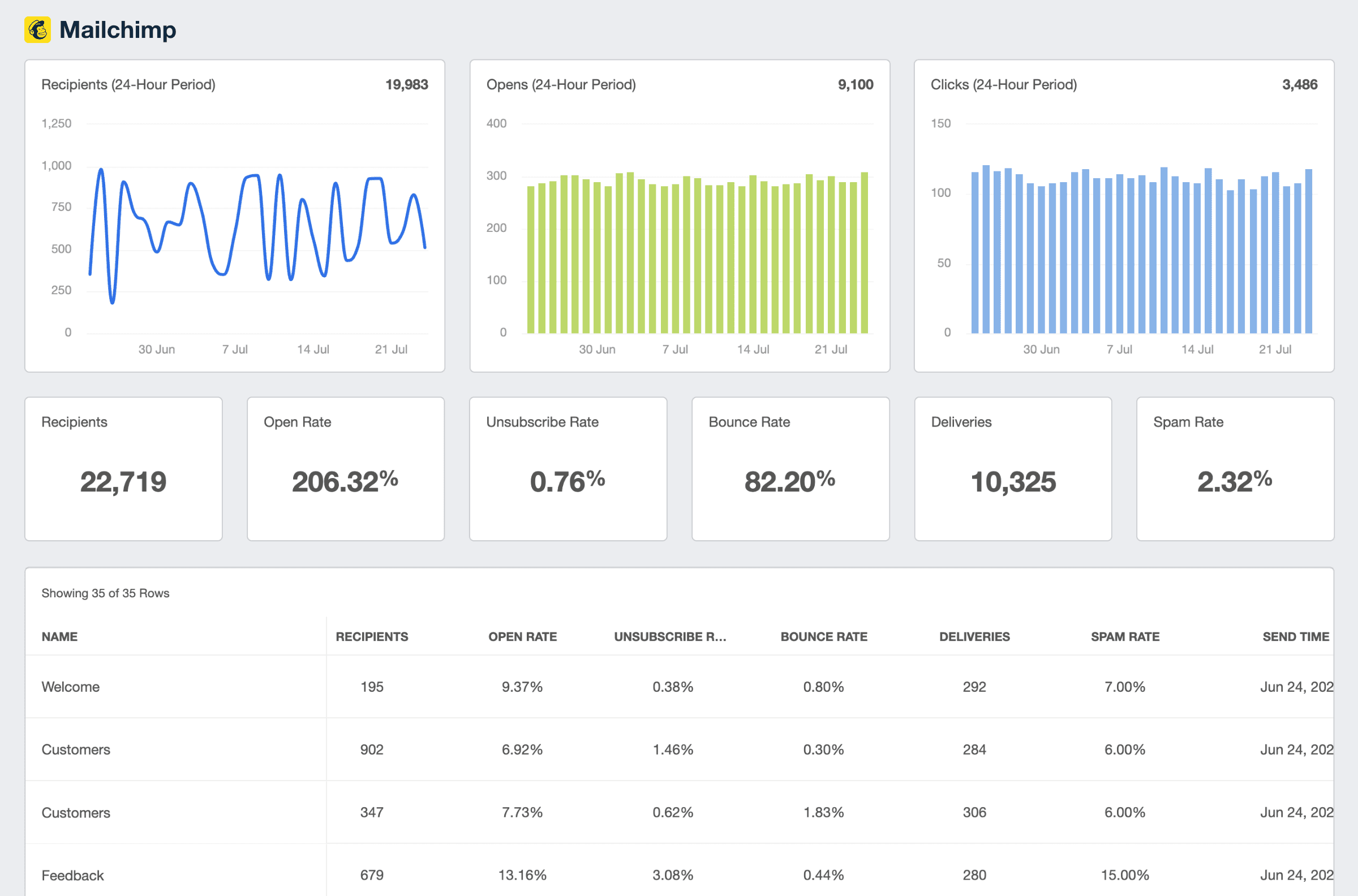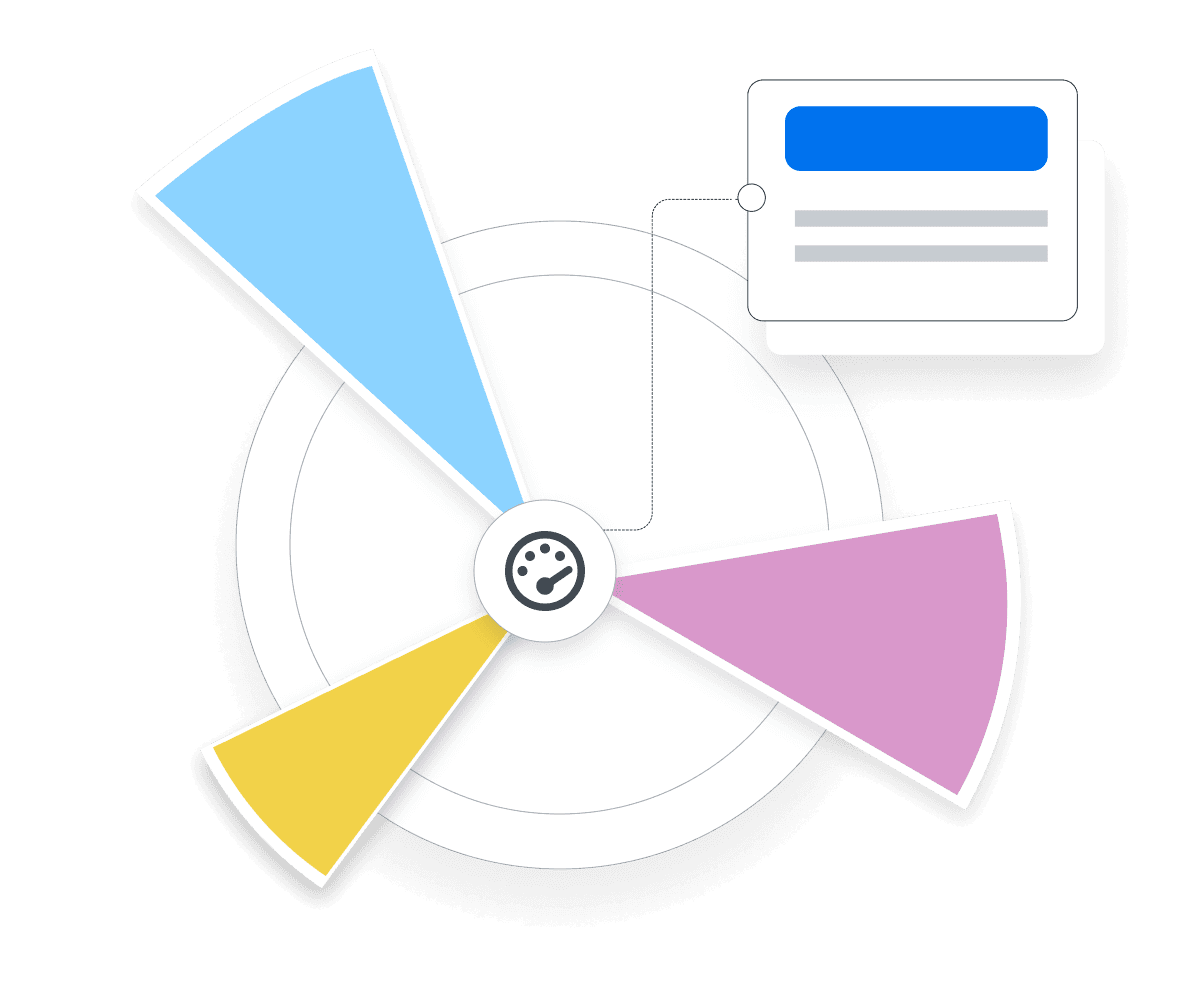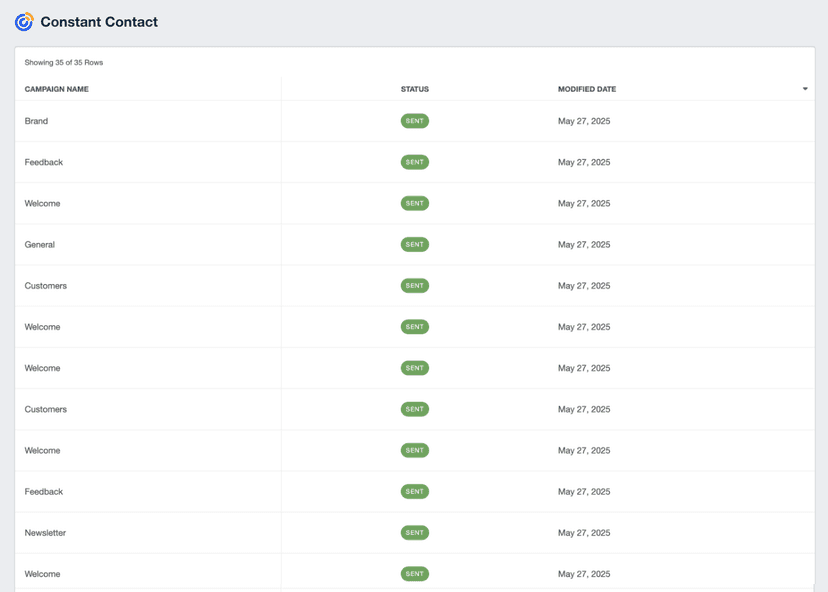Email Unsubscribe Rate
A/B Testing
Experiment with different email elements and monitor how they impact unsubscribe rates to refine email campaigns.
Content Relevance
High unsubscribe rates signal a need for content optimization to better align with the audience’s interests and needs.
Frequency Control
Determine the ideal email frequency, prompting adjustments to the send frequency to reduce audience fatigue.
Client Reporting
Highlight how efforts have improved engagement and reduced unsubscribe rates.
Why Email Unsubscribe Rate Is Important
Email Unsubscribe Rate is a direct gauge of audience engagement. When recipients choose to unsubscribe, they're essentially sending a signal that something in email marketing campaigns isn't aligning with their preferences or needs. Monitoring this metric is crucial to avoid mass disengagement and maintain a healthy email list.
High Email Unsubscribe Rates are a red flag, indicating that the email content or frequency might be overwhelming or not hitting the mark. By tracking this metric, email marketers efficiently identify issues and make necessary adjustments to keep the audience engaged and retained.
Stop Wasting Time on Manual Reports... Get Email Insights Faster With AgencyAnalytics
How Email Unsubscribe Rate Relates To Other KPIs
Understanding Email Unsubscribe Rate is key when refining an overall marketing strategy. This metric is connected with other critical KPIs, such as Conversion Rates. A sudden spike in unsubscribes could signal a mismatch between audience expectations and the email content, and the more users who unsubscribe means less opportunities to drive conversions in the future.
Open Rate and Click-Through Rate (CTR) is also closely connected to Email Unsubscribe Rates. When subscribers don't find the content engaging enough to open or click, they're more likely to opt out. Balancing these metrics helps optimize both content quality and relevance.
We find that our clients care the most about email metrics such as opens and clicks, followed by unsubscribes.
How To Calculate Email Unsubscribe Rate
Calculating Email Unsubscribe Rate is straightforward and essential for evaluating email campaign performance. To calculate the average unsubscribe rate, you need two numbers: the total number of unsubscribed email recipients and the total number of emails delivered.
Email Unsubscribe Rate Formula Example
What Is a Good Email Unsubscribe Rate?
A good average Email Unsubscribe Rate typically hovers around 0.5% or lower. This low rate suggests that the email content is resonating with the audience and providing value. Keeping unsubscribe rates in this ballpark indicates a healthy list and a more effective email marketing strategy.
What Is a Bad Email Unsubscribe Rate?
A bad average Email Unsubscribe Rate exceeds 2-3%. This indicates that there are issues with the email content or targeting, resulting in higher unsubscribes.
How To Set Email Unsubscribe Rate Benchmarks and Goals
After gaining an understanding of general industry benchmarks, it’s helpful to take a look back in time and identify historical trends for the client. Has their Email Unsubscribe Rate tanked in the last year? Improved? From there, determine future goals for this metric.
For more granular detail, consider segmenting the audience and analyzing unsubscribes by demographics, email content, and timing. Identifying patterns helps tailor strategies for different audience segments, improving overall campaign effectiveness.
Why Email Unsubscribe Rate Matters to Clients
Email Unsubscribe Rate is a great metric to measure trust with an audience. This metric helps clients determine if their audience is engaged and loyal. A low rate means a client’s content resonates with the target audience, and the messaging is relevant.
Relevant, engaging, and compelling email content means more opportunities with subscribers, such as increased conversions.
Why Email Unsubscribe Rate Matters to Agencies
Monitoring Email Unsubscribe Rate helps agencies identify problems and preferences. View it as an important diagnostic tool. For example, if unsubscribes spike, it’s signaling that there are areas of improvement throughout the email campaigns.
This important metric helps marketing agencies refine strategies, tailor content, and provide a better email marketing experience for clients.
Impact of Email Unsubscribe Rates on Email Deliverability
Another key factor to consider is that unsubscribes directly influence the domain reputation with email service providers and potentially impact the ability to reach the target audience effectively.
Consistently higher than average unsubscribe rates may lead to a decline in the domain reputation, affecting the overall email deliverability. On the other hand, maintaining low unsubscribe rates demonstrates a healthy subscriber base and contributes to a positive sender reputation.
Monitoring and optimizing unsubscribe rates to align with industry averages is essential for maintaining a positive sender reputation and maximizing email deliverability.
Discover the Client Reporting Platform Trusted by Over {{customer-count}} Marketing Agencies
Best Practices When Analyzing and Reporting on Email Unsubscribe Rate
Spotting a spike in Email Unsubscribe Rate early on paves the way for more effective advertising campaigns going forward. Use this metric as a tool for email campaign optimization.
Ensure Data Accuracy
To measure Email Unsubscribe Rate accurately, ensure clean, error-free data. Remove duplicates, validate email addresses, and track unsubscribes diligently. Accurate data is necessary to gain reliable insights.
Track Trends Over Time
Analyze Email Unsubscribe Rate trends over months or seasons. This reveals patterns and helps adjust the strategy seasonally or during specific marketing campaigns.
Uncover Campaign-Specific Insights
Break down Email Unsubscribe Rate by individual campaigns. This helps identify which campaigns resonate best with the audience and which need adjustments.
Visualize Performance
Help clients see the full story of their email marketing efforts by Visualizing Email Unsubscribe Rate data through charts and graphs. It makes complex information easily digestible, aiding in faster decision-making.
Connect Results to Client Goals
Show how Email Unsubscribe Rate contributes to achieving client goals. Connect the dots between lower unsubscribes and improved conversions or brand loyalty.
Make Actionable Recommendations
Include concrete, actionable recommendations based on Email Unsubscribe Rate analysis. Provide clients with steps to improve this crucial metric for future campaigns.
Too often (because it’s low cost), people just go through the motions and make little to no attempt to differentiate their email campaigns. Sent, Delivered, Opened, Clicked, and Unsubscribed are important and can’t be looked at in isolation. Any metric has to be considered against a desired outcome.
Mailchimp Dashboard Example

Related Integrations
How To Improve Email Unsubscribe Rate
Are a client’s email unsubscribes on the rise? Here are three actionable tips to keep their audience engaged and reduce those pesky opt-outs.
Personalize the Content
Tailor emails to individual preferences. Personalization and relevant content go a long way in making subscribers feel valued and less likely to hit that unsubscribe button.
Segment the Audience
Segment the email list based on interests and behavior. Deliver content that's relevant to each group to keep subscribers engaged. Segmentation also makes it easier for users to opt out of receiving only those emails, keeping them on the broader email list.
Craft Engaging Subject Lines
Write compelling subject lines that grab attention. A well-crafted subject line entices readers to open emails and stay engaged. Unengaged recipients are far more likely to click that unsubscribe link.
Related Blog Posts
See how 7,000+ marketing agencies help clients win
Free 14-day trial. No credit card required.















